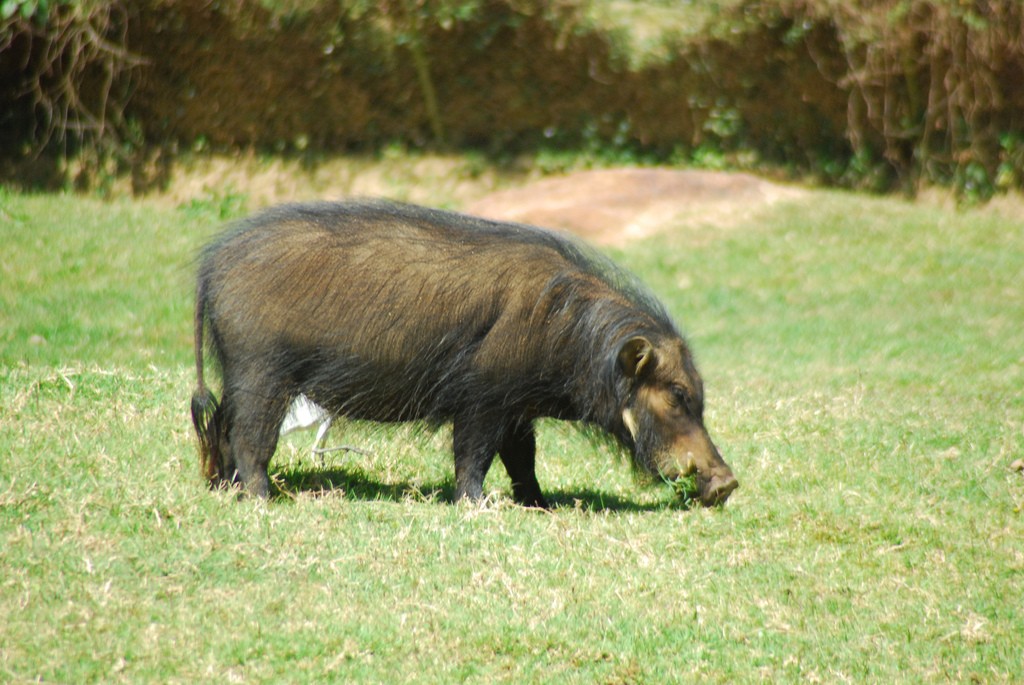
Giant forest hog
 The giant forest hog, the only member of its genus (Hylochoerus), is native to wooded habitats in Africa and is one of the largest wild members of the pig family, Suidae, along with a few subspecies of the wild boar. It was first described in 1904. The specific name honours Richard Meinertzhagen, who shot the type specimen in Kenya and had it shipped to the Natural History Museum in England.
The giant forest hog, the only member of its genus (Hylochoerus), is native to wooded habitats in Africa and is one of the largest wild members of the pig family, Suidae, along with a few subspecies of the wild boar. It was first described in 1904. The specific name honours Richard Meinertzhagen, who shot the type specimen in Kenya and had it shipped to the Natural History Museum in England.
It is (on average) the largest member of the genus Sus.
It is listed as least concern
There are 3 subspecies recognized, and their ranges are shown on the map.
They are unable to cope with low humidity or prolonged exposure to the sun, which restricts them to habitats with plenty of dense cover.
Generally nocturnal, cold whether can cause them to become active during the day, though human presence can push them into a diurnal habit (active in early morning and the evening). It is generally a herbivore, though it has been known to scavenge from remains of kills. Herd animals, they generally live in groups of a dominant male, his group of females and their offspring.
While as yet, never domesticated, it is easily tamed, and so is thought to be a good possibility for future farming.
It is considered more dangerous if encountered, than the closely related red river hog and the bush pig. Having said this, it is regularly hunted by leopards, though due to its size, more often large male leopards. Due to its habitat being in rainforest, it rarely comes into contact with lions (though likely if its ranges overlapped, it would eat more. It should be noted that, in the past, the western African lion (and the central African lion) may well have been predated by these Asiatic lion subspecies (west and central African lions) when these lions where less close to extinction.










